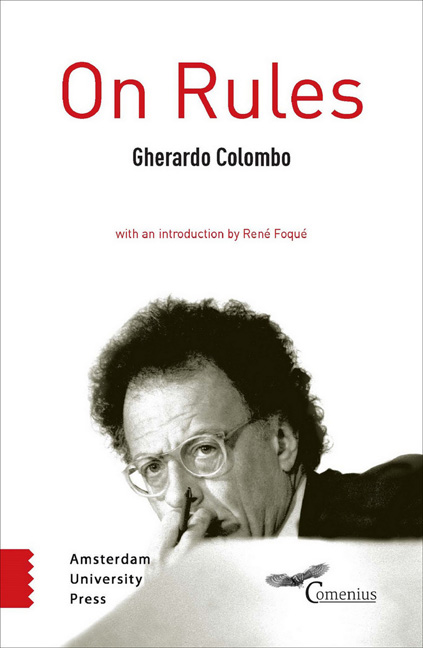Book contents
- Frontmatter
- Introduction: Gherardo Colombo’s Concern for the Democratic State under the Rule of Law: A Work in Progress
- Why?
- 1 An Imaginary Country
- Contents
- Part I The Ambiguities of Justice
- Part II Horizontal Society and Vertical Society
- Part III Towards a Horizontal Society
- Part IV How Do We Get There?
- Conclusion
- Acknowledgments
30 - The Time Dynamic
Published online by Cambridge University Press: 24 December 2020
- Frontmatter
- Introduction: Gherardo Colombo’s Concern for the Democratic State under the Rule of Law: A Work in Progress
- Why?
- 1 An Imaginary Country
- Contents
- Part I The Ambiguities of Justice
- Part II Horizontal Society and Vertical Society
- Part III Towards a Horizontal Society
- Part IV How Do We Get There?
- Conclusion
- Acknowledgments
Summary
History is a path; there is a before and an after, a yesterday, a today, and a tomorrow. It is a route, formed by a concatenation of steps. It resembles a long, arduous mountain trail on which you cannot see the end. Each step in itself seems to be unimportant – so short it is compared to the whole length of the way – yet you only realise how important it is when you turn back and notice the distance you have covered, or when you look ahead and start to catch a glimpse of the destination. The perception of history, of the progress of humanity along the way, is not always the same: individual moments and steps are experienced as if they did not have a before and an after, as if people did not understand that reaching the end requires a series of steps, and takes time.
The attitude of people towards history is one of impatience: they want an immediate solution, they demand that changes take place overnight. If they cannot perceive them immediately, they tend to rule out that it can happen. They lose heart and get stuck, like whining children who refuse to keep on walking and expect to be picked up into someone's arms. The great effort they have put into taking each step seems to be wasted, since they are unable see the destination or discern the path.
What is missing is the idea of building, of putting one brick on top of another, so that finally the house can be seen.
Sometimes the prospect that, along the way of history, overcoming injustice may take time seems too hard to accept. Some people may shut themselves off, erasing the issue and living as if the problem did not exist. Others may indulge in violent rebellion. The former lapse into indifference; they leave the scene. The latter are caught in a hopeless spiral, becoming themselves the cause of blatant injustice – reckless, overambitious death-mongers. They can be compared to the judges who impose the death penalty (lawlessly, without a trial, without evidence, without the possibility of defence); abusers of other people's dignity, mirrors that reflect the same intolerant, haughty, and boastful otherness they claim (and sometimes even believe) to fight.
- Type
- Chapter
- Information
- On Rules , pp. 133 - 134Publisher: Amsterdam University PressPrint publication year: 2016



